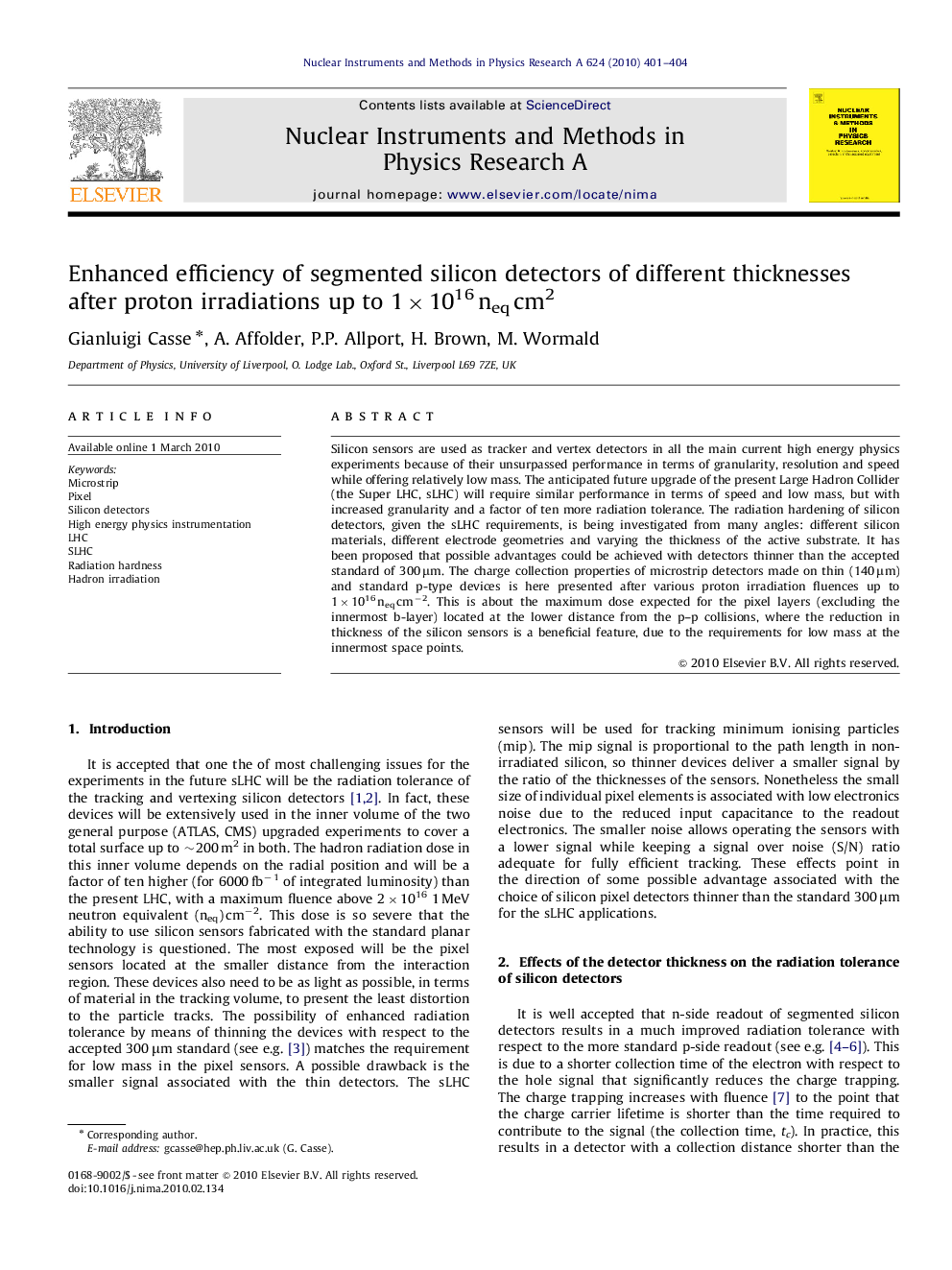| کد مقاله | کد نشریه | سال انتشار | مقاله انگلیسی | نسخه تمام متن |
|---|---|---|---|---|
| 1825630 | 1027366 | 2010 | 4 صفحه PDF | دانلود رایگان |

Silicon sensors are used as tracker and vertex detectors in all the main current high energy physics experiments because of their unsurpassed performance in terms of granularity, resolution and speed while offering relatively low mass. The anticipated future upgrade of the present Large Hadron Collider (the Super LHC, sLHC) will require similar performance in terms of speed and low mass, but with increased granularity and a factor of ten more radiation tolerance. The radiation hardening of silicon detectors, given the sLHC requirements, is being investigated from many angles: different silicon materials, different electrode geometries and varying the thickness of the active substrate. It has been proposed that possible advantages could be achieved with detectors thinner than the accepted standard of 300 μm. The charge collection properties of microstrip detectors made on thin (140 μm) and standard p-type devices is here presented after various proton irradiation fluences up to 1×1016 neq cm−2. This is about the maximum dose expected for the pixel layers (excluding the innermost b-layer) located at the lower distance from the p–p collisions, where the reduction in thickness of the silicon sensors is a beneficial feature, due to the requirements for low mass at the innermost space points.
Journal: Nuclear Instruments and Methods in Physics Research Section A: Accelerators, Spectrometers, Detectors and Associated Equipment - Volume 624, Issue 2, 11 December 2010, Pages 401–404